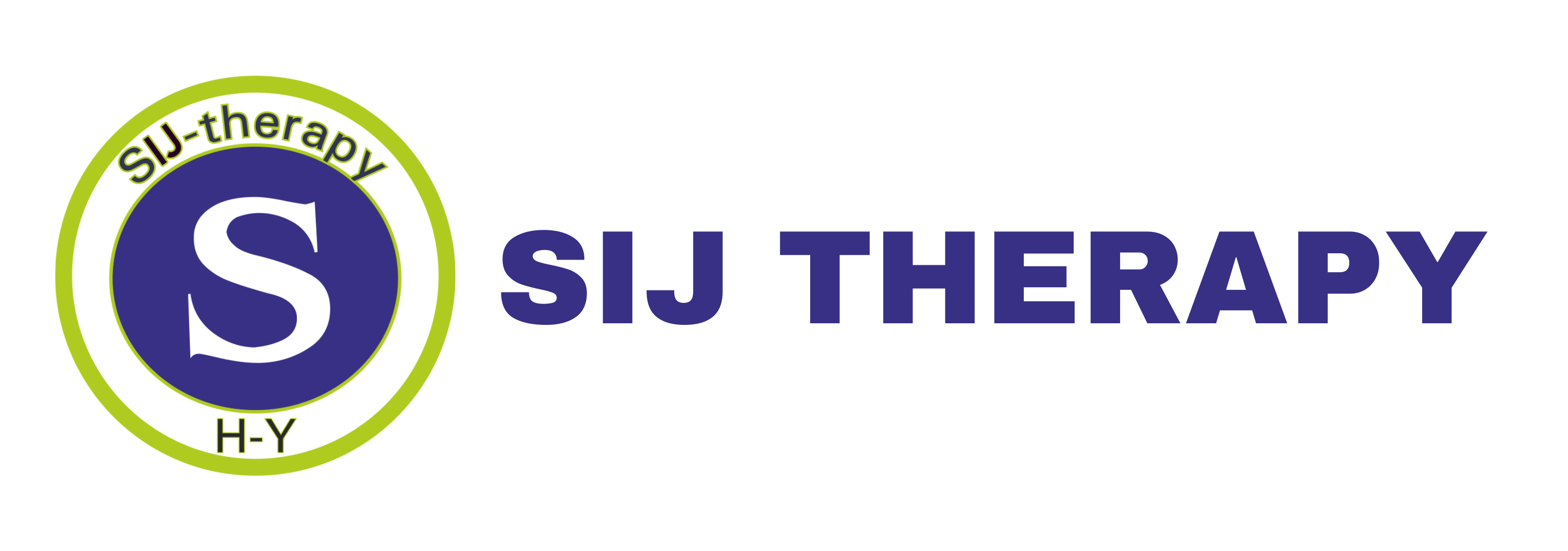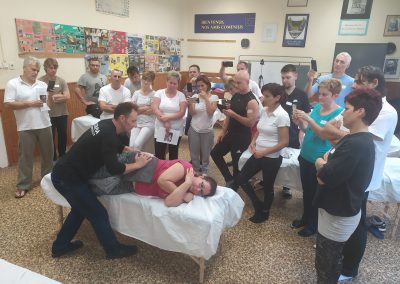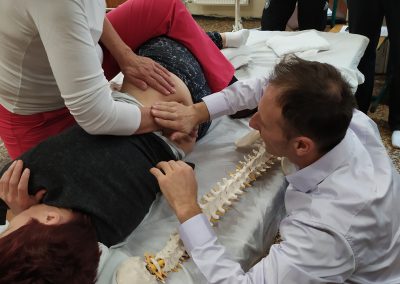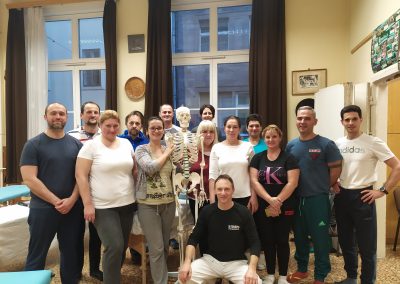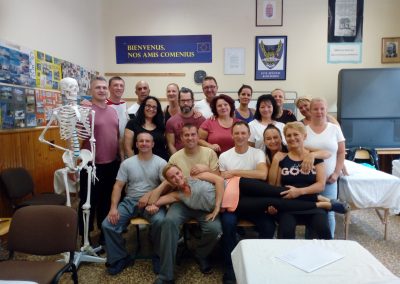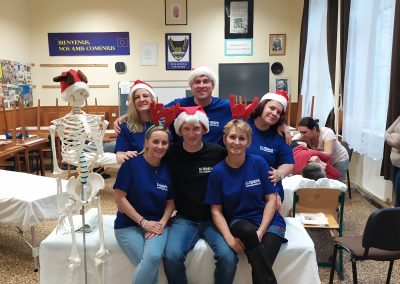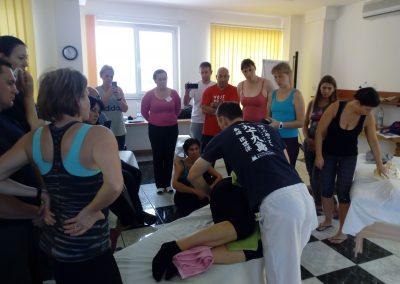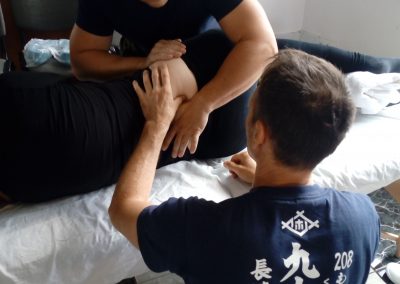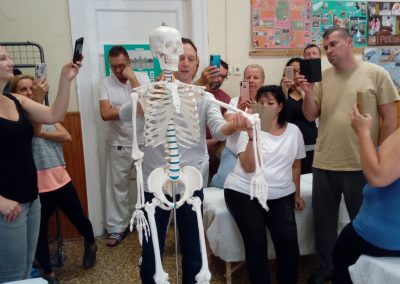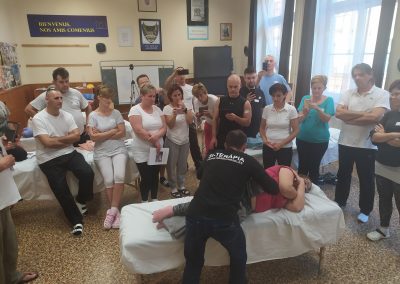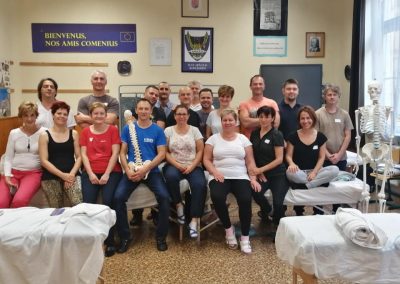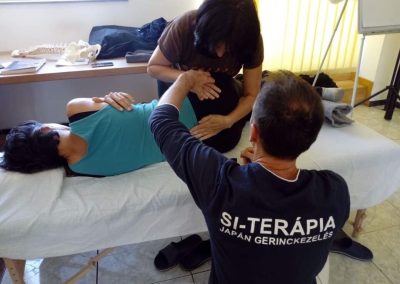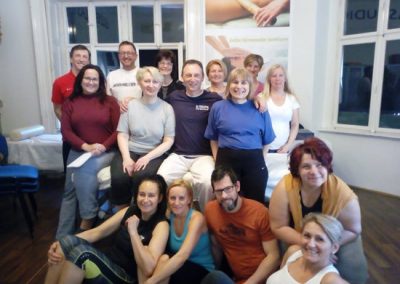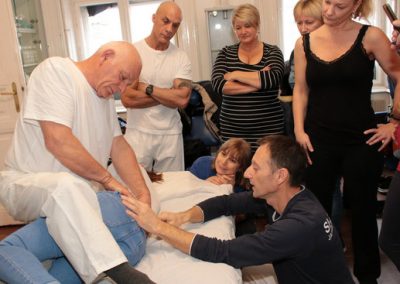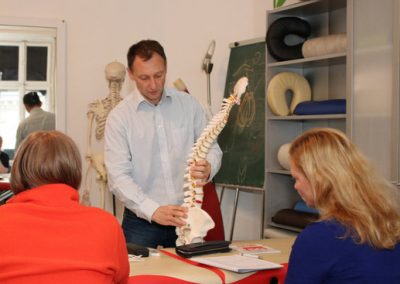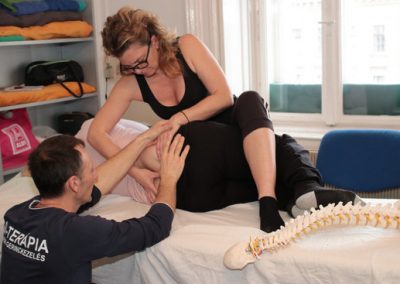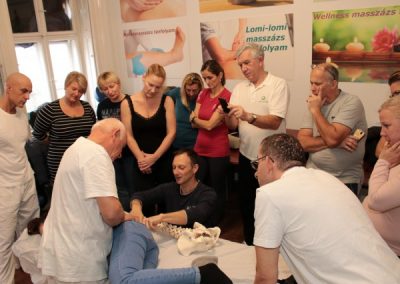SIJ-Therapy Courses
Unique Japanese spine treatment course, exclusive in Europe.
SI JOINT IS THE CORE STRUCTURE OF THE BODY
According to the theory of modern musculoskeletal integration, SI joint dysfunction adversely affects the functioning of all vertebral and limb joints.
SIJ Therapy (Japanese spine treatment)
Nationally accredited, continuing professional developmental course in Hungary
Course registration number: SZTK-A-48001/2021
Therapists from nearly every country come to us to learn about this innovative therapy. It is a gentle, painless method that only moves the joint a few millimetres during treatment, restoring free and unobstructed joint function. Once the joint block is removed, muscle tension is immediately released, and the pain disappears. The sacroiliac joint (SI joint) is central to our body. According to modern musculoskeletal integration theory, dysfunction of the SI joint adversely affects the function of all vertebral and limb joints therefore, it is essential for as many therapists as possible to adopt this pain-free method.
In numerous cases, back pain persists even after disc herniation surgery, which prompted Japanese healthcare professionals to investigate other potential causes of lower back pain. They discovered that the SIJ is responsible for more cases of lower back pain than previously thought.
Professor Hakata in Japan then developed this highly effective method for treating it.
While I successfully learned these techniques in Japan, I noticed that they posed challenges for therapists, particularly straining their thumbs and lower backs.
We’ve collaborated extensively with neurologists like Dr. Géza Nagy to enhance the treatment’s efficacy for patients and reduce stress on therapists. Through relentless effort, we’ve expanded the method by incorporating numerous mobilisation techniques and tests, considering the Lovett reactor theory that implies that the sacrum with the occiput, L5 vertebra with the atlas (C1 cervical vertebra), and L4 vertebra with the axis (cervical vertebra C2) are firmly connected. Given these connections, we’ve developed an advanced Atlas therapy method to enhance SI joint treatment further, although Atlas therapy is covered in a separate course due to time constraints.
Our students will master a series of tests to confirm the SI joint as the root cause of issues. We’ll also explore potential links between the atlas and SI joint dysfunction.
Upon completing the course, students will gain insights into
→ The relationship between SI joint dysfunction and conditions like frozen shoulder syndrome or knee pain.
→ We’ll address differences between a male and a female SI joint
→ The impact of childbirth on the joint and the importance of postpartum treatments.
→ The course also delves into the connection between SI joint function and activities such as standing, walking, and posture.
→ Additionally, we’ll cover therapy recommendations post-fusion spine surgery.
Since the sacroiliac joint is located between the sacrum and the ilium, the position and movement of both bones affect its function and movement. It impacts the function of the multifidus associated with the sacrum and the muscles related to the iliac bone.
The sacrum’s position affects the anterior and posterior longitudinal ligaments, which run from the coccyx to the foramen magnum, and are crucial for head and arm movements. You cannot turn your head or raise your arms without affecting the function of the SI joint.
Often, pain is significantly reduced or eliminated after the initial treatment.
SIJ Therapy is a series of courses; the first level deals only with SI joint dysfunctions and learning how to treat them. In the other classes, we will learn how to treat the rest of the body because everything is connected.
SIJ Therapy comprises a series of courses; the initial level focuses on the SI joint, while subsequent classes cover treating the entire body due to its interconnected nature. SI joint dysfunction is often the primary cause of non-specific lower back and buttock pain.
POSSIBLE SOURCES OF SI JOINT PAIN
● Hypomobility in the SI joint (S1, S2):
In this scenario, the pain typically manifests in the lumbar spine and/or on one side of the sacrum, potentially radiating to the lower limb, primarily affecting the region above the knee. In some cases, the pain may also extend down to the ankle or foot, resembling radicular symptoms caused by the sciatic nerve.
● Hypermobility or instability in the SI joint:
In such cases, the pain usually originates in the lower back and/or hips and radiates to the groin area.
RISK FACTORS FOR SI JOINT DYSFUNCTION:
• Leg length discrepancy, e.g., congenital or acquired femur shortening, tibia shortening.
• Lower extremity prostheses; hip, knee, and ankle prosthetics, as they all cause an incorrect static load on the SI joint.
• Gait disorder, e.g., favouring one leg due to pain.
• Various traumas, e.g., falling on the bottom, car accidents, wrong steps, fatigue (stress) fractures.
• Pregnancy (hormonal loosening of joint ligaments, weight gain).
• Childbirth.
We are honoured to have had many doctors, countless physiotherapists, and massage therapists choosing and completing our course.
Since 2018, we’ve been conducting training sessions in Hungary, both in Budapest and the countryside. Nearly 800 students have mastered the technique and gained numerous successful experiences. Check out the success stories below.
Coming to England soon!
Follow us!
Email: sij@sijtherapy.com
If you’d like to enroll in our May 2025 training program in England, please email your application to the address provided!
Snapshots of the course…
Students Testimonials
“The SIJ Therapy course provides essential knowledge to all healthcare professionals. During assessments, I often observed asymmetrical movement in the pelvis, assuming nothing could be done about it. However, upon learning this therapy, I realised that the limitation stemmed from SI joint blockage, significantly impacting pelvic movement. The SIJ techniques not only alleviated leg pain but also proved safe for herniated discs, as we targeted the SI joint, not the disc itself. This therapy, characterised by its subtlety and precision, is underscored by the requirement for students to complete 100 case studies post-training. I recommend this course to anyone involved in manual or spinal therapy and those who want to gain insights into cases that may have remained puzzling.“
“With over 20 years of experience as a physiotherapist, I’ve acquired knowledge of numerous manual therapies that I apply almost daily. Recently, I attended the SIJ Therapy Course, rooted in Japan and was instructed by Csaba HORVÁTH. We learned to mobilise the joint between the sacrum and ilium. Following a brief consultation, we could reduce the pain within minutes, sometimes eliminating the need for further therapies. Compared to other manual therapies, SIJ Therapy is gentle on the body and joints and causes minimal discomfort for the patient. It has few contraindications, and patients often experience relief and a sense of well-being after treatment.”
“As a rheumatologist, I enjoy exploring diverse manual therapies that broaden my understanding and aid in addressing various health conditions. Despite my proficiency, treating the SI joint remained a challenging area, prompting me to delve into SIJ Therapy. Throughout the course, I was pleasantly surprised by how these gentle movements effectively mobilised the seemingly ‘unmanageable’ SI joint. The therapy proves beneficial in cases where MRI results are negative, however patients experience severe pain or restricted range of motion.
It’s an outstanding choice for manual therapists and seamlessly integrates with other therapeutic approaches.
“
